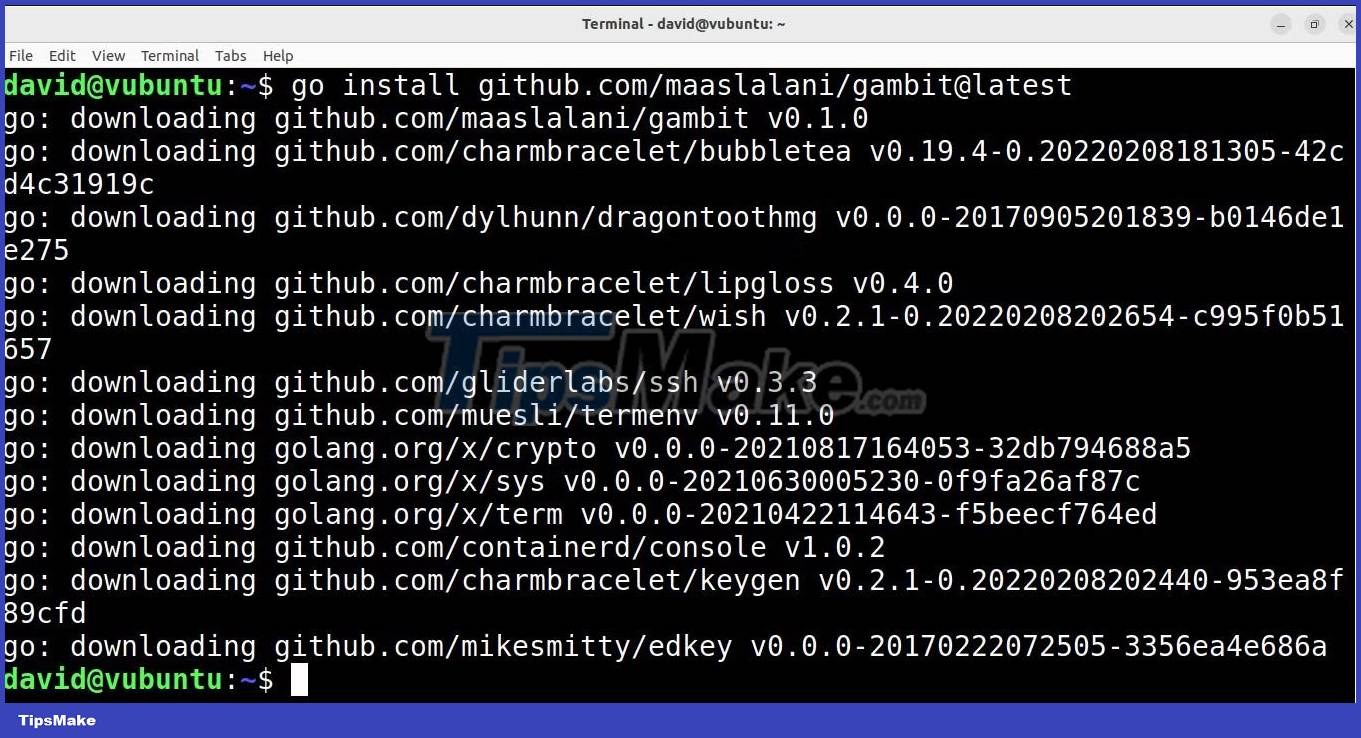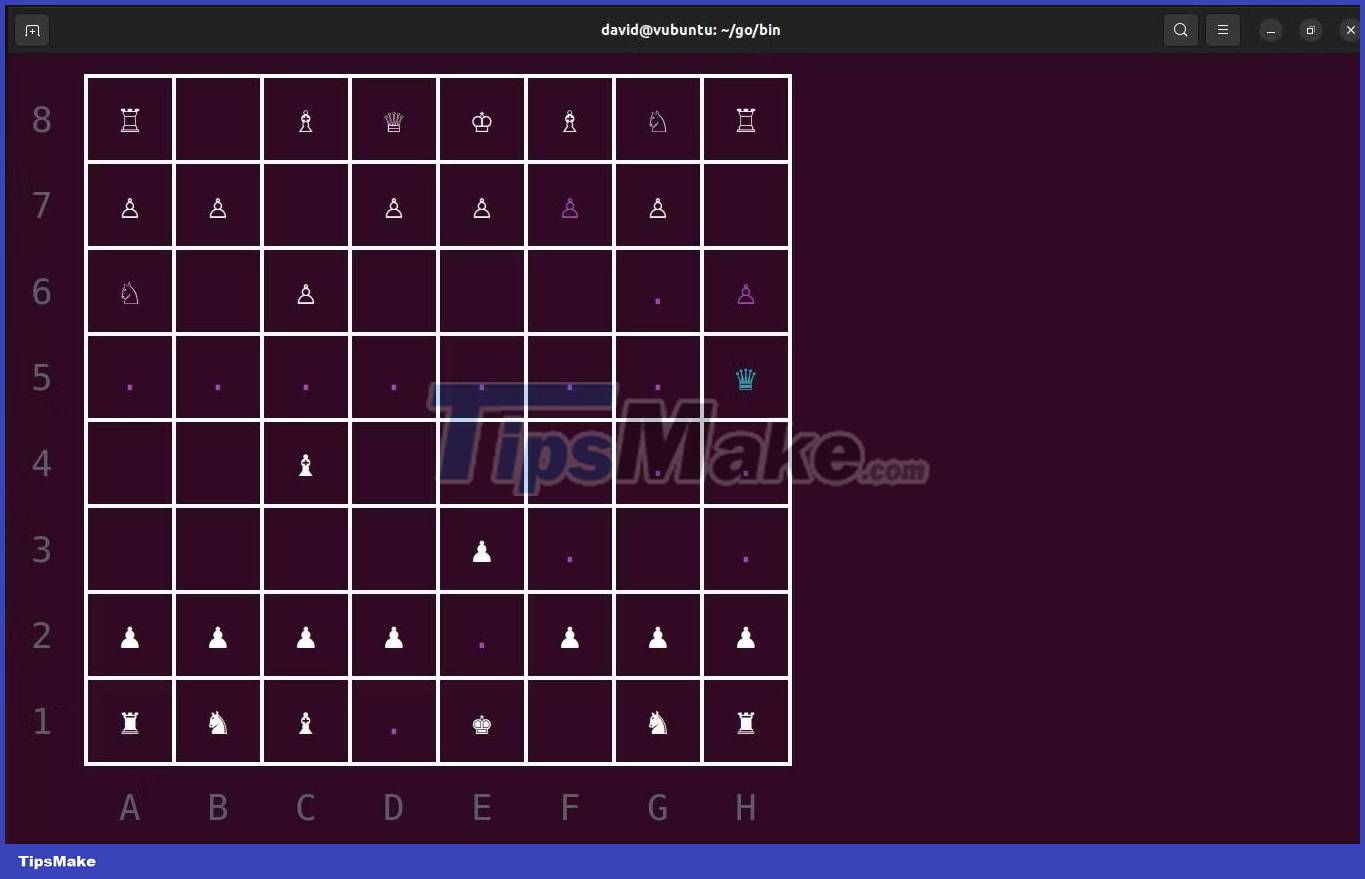How to play chess in Linux terminal (with Multiplayer support over SSH)
Here's how to do it.
Gambit brings a graphical chessboard in the Linux terminal

Chess is one of the greatest games of all time, whose history dates back to the 6th century Gupta Empire in India. Although the rules have improved over time, chess is still popular due to its ease of access and the mental challenge of man-to-person competition.
If you've never played chess before, don't worry; you can easily learn to play chess on your phone. Traditionally, chess is a two-player game, played on a physical board with 64 squares and 16 pieces on each side.
Before the advent of the Internet, if you wanted to play chess with someone who was not in the same room as you, each player would have to have their own chess board and announce their move via telegram, phone or text message.
Today, you can use mobile apps or open a web browser and join one of the many online chess sessions on dedicated websites.
But mobile apps can be expensive, and not everyone has a computer with a pre-installed web browser or even a graphical desktop.
With Gambit, you can create a game of chess right in your terminal and play with the person sitting next to you. Plus, you can join the game over SSH, meaning you can instantly play against anyone in the world.
Install Gambit on Linux

Gambit is written in Google's Go language, so before you begin, make sure you have Go installed on your Linux system.
If your distro supports Snap, the easiest way to install Go is to:
sudo snap install go --classicOnce you have Go installed, you can install Gambit with:
go install github.com/maaslalani/gambit@latestThis command will install the Gambit binary to ~/go/bin/gambit.
You can make the binary file accessible from any terminal by creating a symlink with the ln command:
sudo ln -s ~/go/bin/gambit /usr/bin/gambitThen you can start Gambit with:
gambitAlternatively, you can install Gambit by cloning its GitHub repository:
git clone https://github.com/maaslalani/gambitThen use the cd command to navigate to the new directory:
cd gambitFinally, start Gambit with:
go run ./If you are a lover of Snap packages, you can install Gambit with the snap command as follows:
sudo snap install gambitHow to play chess in terminal with Gambit

If you've read this far, you probably know at least the basics of how to play chess.
The game starts as soon as you open Gambit, and you'll see a board complete with representations of pieces that are either white or black with white outlines.
When it's your turn to move, click on a piece. You will see a colored dot representing the space your piece can move to. Click a position to move the piece. Alternatively, if your computer doesn't have a mouse, you can use your keyboard to select the square you want to move the piece to.
The only minor annoyance you have when playing chess this way is that the tiles on the board are all black, instead of black and white. This can make it difficult to easily visualize the path for your pieces.
If you are playing against an opponent on the same computer, you can press Ctrl + F to flip the board to get a better view of the moves.
But if you're sitting next to someone, it's probably easier and a little more satisfying to open a real board and arrange the pieces. Gambit is only really useful when you want to challenge players far away.
Secure Shell (SSH) is a protocol used to securely connect to remote devices and with this protocol you can organize a game of chess with Gambit and let other players connect to the protocol there.
Before you start, you need to generate an SSH key. It's not in the documentation, but Gambit will reject keys generated with the RSA algorithm. You will need to use the newer ECDSA algorithm with a minimum key size of 256 bits to host a chess game over SSH with Gambit.
On the host machine, enter:
ssh-keygen -t ecdsa -b 256Select whether you want to use a password, and then press Enter. You can find your new key pair in the "~/.ssh/" directory.
Tip : If you're playing against an opponent on a different network, the host will need to open port 53531 on the router and forward connections to the host's IP address. This requires you to have some basic knowledge of port forwarding on the router.
To start the Gambit server, enter:
./gambit serve --key ~/.ssh/id_ecdsaGambit will start the server on port 53531 and players can connect to the game using:
ssh host_username@remote.host.ip.address -p 53531 -t room_name.where room_name is the name chosen by the first player to join.
Back on the host machine, you won't find a chessboard in your current terminal. Open a second window or tab, then type:
ssh your_username@localhost -p 53531 -t room_nameNow, you can play chess with your opponent.
You should read it
- 5 interesting entertainment games in Linux Terminal
- Top 7 best Linux terminal emulators
- Basic knowledge in chess
- 14 interesting Linux commands in Terminal
- How to use Guake Terminal in Linux
- Simple way to play chess on Facebook Messenger
- Chess occurrence rate Mobile Union Chess
- How to install dictionaries in Linux Terminal
May be interested
- How to fix the problem of being unable to enter Terminal in Linux
 nothing is perfect and sometimes, even terminal can stop responding or ignore what you type. if your terminal crashes and you can't enter it, here are some of the most common causes and solutions for them.
nothing is perfect and sometimes, even terminal can stop responding or ignore what you type. if your terminal crashes and you can't enter it, here are some of the most common causes and solutions for them. - Make Terminal More Fun with These 8 Linux Tools!
 these tools will help you be more efficient, productive, and even have more fun working in terminal. let's take a look at some of our favorite command line tools!
these tools will help you be more efficient, productive, and even have more fun working in terminal. let's take a look at some of our favorite command line tools! - Simple way to play chess on Facebook Messenger
 facebook messenger is now not only a chat app, but it has been integrated with chess games to help users relax and entertain after stressful work. to understand how to play, you can refer to our guide below.
facebook messenger is now not only a chat app, but it has been integrated with chess games to help users relax and entertain after stressful work. to understand how to play, you can refer to our guide below. - Chess occurrence rate Mobile Union Chess
 in this article, there is a rate of chess chess with each level, based on this you can better manage your money and know when to roll chess in the chess chess.
in this article, there is a rate of chess chess with each level, based on this you can better manage your money and know when to roll chess in the chess chess. - 7 Ways to Restart Linux from Terminal
 restarting linux from the terminal may seem difficult, but don't worry, it's quite simple once you know the right commands. restarting linux is necessary after updating, troubleshooting, or performing system maintenance.
restarting linux from the terminal may seem difficult, but don't worry, it's quite simple once you know the right commands. restarting linux is necessary after updating, troubleshooting, or performing system maintenance. - How to run 2 or more Terminal commands at the same time on Linux
 if you use linux, you probably know how to use useful commands to work with files, install software and launch programs. however, one thing you don't know is that you can still run multiple commands at the same time.
if you use linux, you probably know how to use useful commands to work with files, install software and launch programs. however, one thing you don't know is that you can still run multiple commands at the same time. - How to play Seahorse Chess well
 the game seahorse chess is loved by everyone, from children to adults, but not everyone knows how to play seahorse chess. you can refer to how to play this unique entertainment game in the article below.
the game seahorse chess is loved by everyone, from children to adults, but not everyone knows how to play seahorse chess. you can refer to how to play this unique entertainment game in the article below. - Top multiplayer Go game
 go games have simple rules with 2 black and white chess pieces, but the strategies are diverse and complex, no less than chess games or chinese chess games. interested players can learn and explore the game. this intellectual sport through the following list of go apps.
go games have simple rules with 2 black and white chess pieces, but the strategies are diverse and complex, no less than chess games or chinese chess games. interested players can learn and explore the game. this intellectual sport through the following list of go apps. - 14 interesting Linux commands in Terminal
 terminal is a very powerful tool, but it can become 'interesting' through a few bash commands that quantrimang will introduce to you later. let's follow up and find out because some commands are quite useful.
terminal is a very powerful tool, but it can become 'interesting' through a few bash commands that quantrimang will introduce to you later. let's follow up and find out because some commands are quite useful. - Dota Auto Chess: Synthesize assassins to be strengthened in this update
 some new updates and changing heroes for players in dota auto chess
some new updates and changing heroes for players in dota auto chess










 3 main types of Linux distributions that you should know
3 main types of Linux distributions that you should know How to list all physical Ethernet ports on Linux server
How to list all physical Ethernet ports on Linux server Ubuntu 23.04 'Lunar Lobster' Beta Launched: What's Notable
Ubuntu 23.04 'Lunar Lobster' Beta Launched: What's Notable How to Run Linux Commands on Windows with WSL 2
How to Run Linux Commands on Windows with WSL 2 How to use ChatGPT from Ubuntu Terminal using ShellGPT
How to use ChatGPT from Ubuntu Terminal using ShellGPT How to play Solitaire in Linux terminal with solitaire-ti
How to play Solitaire in Linux terminal with solitaire-ti